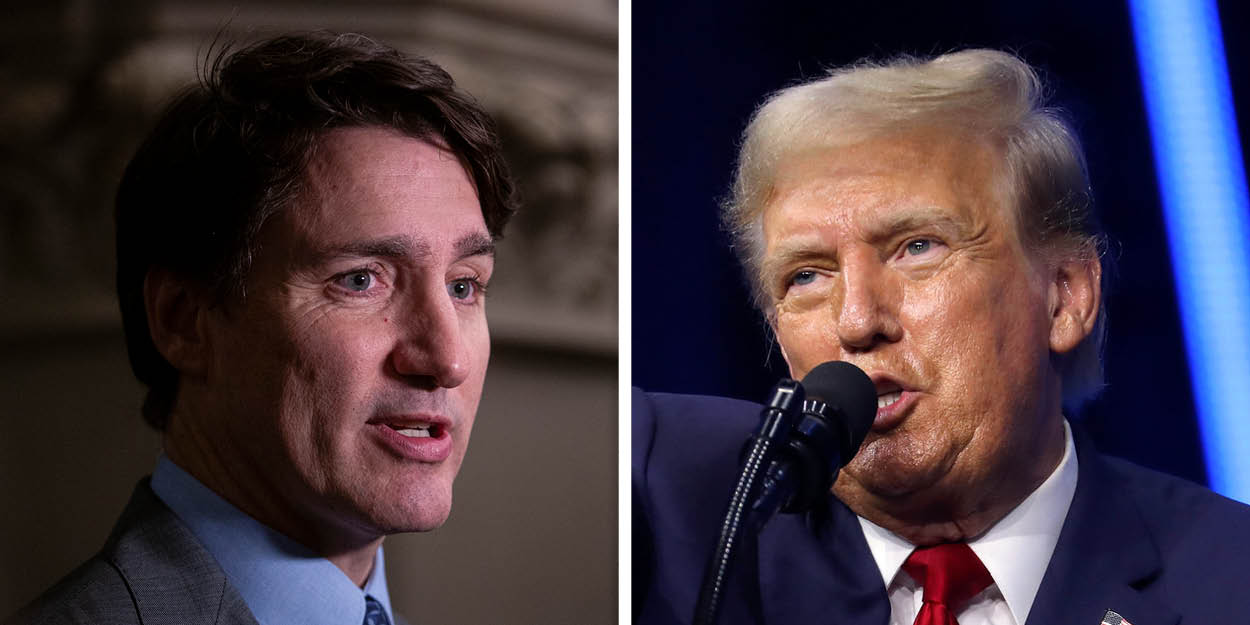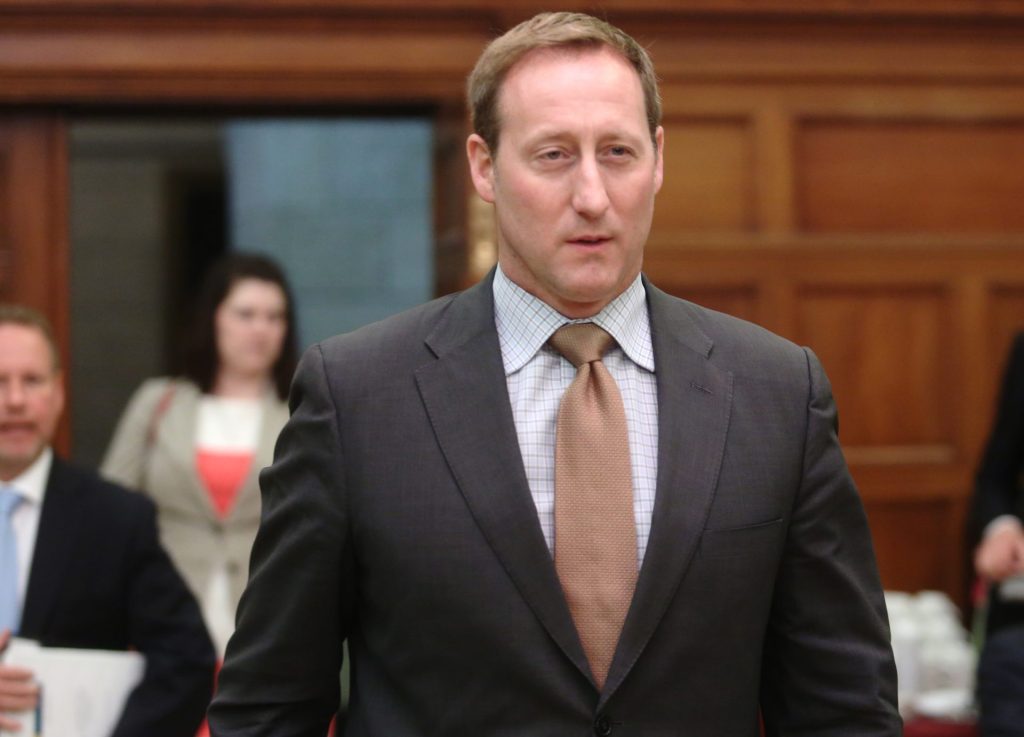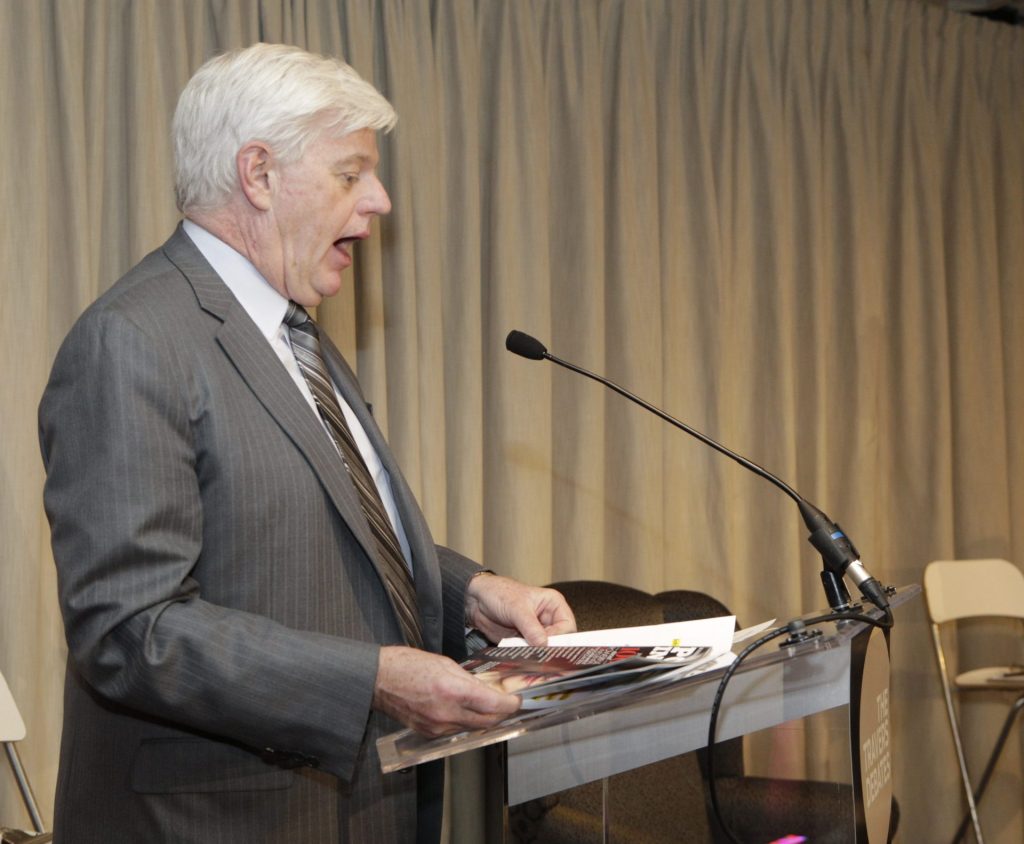Canada ‘not out of the woods’ in tariff stand-off with president who ‘thrives on ambiguity,’ say Canada-U.S. experts

U.S. President Donald Trump “thrives on ambiguity” and that means Canada is “not out of the woods yet” despite a 30-day delay on his plans to implement sweeping tariffs, say several Canada-U.S. relations veterans.
Late in the afternoon on Feb. 3, Prime Minister Justin Trudeau (Papineau, Que.) posted to X saying that his second phone call that day with Trump had resulted in a delay of the tariffs set to go into effect on Feb 4.
The communication between the two leaders came after weeks of Trump steadily ramping up threats about slapping tariffs on Canadian goods entering the United States, as well as heightening rhetoric about making Canada the “51st state.”

Trump had announced on Feb. 1 that he planned to slap 25 per cent tariffs on all Canadian goods entering America—with a reduced rate of 10 per cent for energy, effective Feb. 4. Canada announced plans for its own retaliatory tariffs going into effect the same day, which would have immediately put a 25 per cent levy on $30-billion of American goods, with an additional tariff of the same rate being applied to another $125-billion worth of imports three weeks later.
At his Feb. 1 press conference announcing Canada’s response, Trudeau revealed he had not been able to reach Trump for a conversation since the Jan. 20 inauguration.
Two Feb. 3 phone calls broke that ice. But Canada spent much of the day on tenterhooks—especially as details broke first of a 30-delay for Mexico. Tensions rose further when footage emerged from the Oval Office of Trump again speaking of Canada becoming a state.
Following their afternoon phone call, Trudeau posted on X, listing several actions Canada would take at its border—such as additional equipment and personnel reinforcements—much of which had already been announced in December as part of Ottawa’s $1.3-billion border plan.
I just had a good call with President Trump. Canada is implementing our $1.3 billion border plan — reinforcing the border with new choppers, technology and personnel, enhanced coordination with our American partners, and increased resources to stop the flow of fentanyl. Nearly…
— Justin Trudeau (@JustinTrudeau) February 3, 2025
Trump made a post on Truth Social confirming the delay, as well as Canada’s agreement to take actions to increase border security. Trump said the levy would be “paused for a 30-day period to see whether or not a final economic deal with Canada can be structured.”
Former Conservative foreign affairs minister Peter MacKay told The Hill Times this means “a continuation of the roller coaster ride we’ve been on since President Trump was elected.”
“I think you could almost hear a collective sigh of relief around 4:30 when the word came down of the second call,” said MacKay. “But we’re not out of the woods yet.”
MacKay said some of Canada’s defence and security-related commitments are efforts Ottawa should have been making anyway.
However, he said, “the method and the language and the urgency that the president has placed on us is unreasonable, and frankly, not based entirely in reality.”
MacKay said the “most unsettling” aspect of the situation is that Canada was facing a heavier tariff than China, which Trump has said would face a 10-per-cent tariff as of Feb. 4.
“His earliest priorities seem to have been to turn on his closest ally and friend and historic military partner, rather than, you know, turning his attention to Russia, to Venezuela, to North Korea, to China,” said MacKay.
“Even being mentioned in the same breath as China on trade relations is beyond bizarre.”
‘We have to put our feet down’: Manley
With a 30-day window until the next deadline, former Liberal foreign affairs minister John Manley said he hopes “everyone will use the time to cool down, and we can get to the bottom of what actually is required.”
“I think if there are reasonable requests, then we should try to meet them if that’s possible,” he said. “Where it’s unknown, or where it’s unreasonable, then I think we have to put our feet down.”
Roy Norton, who had a lengthy career in Canada’s foreign service—including two stints at the Canadian embassy in Washington, D.C.—said Trump is a figure who “thrives on ambiguity,” which appears to be an element in play in the current almost-trade war.
“I think he feels that his position is strengthened when people don’t know how to accommodate him,” said Norton.
He said the language in Trump’s post about a “final economic deal” with Canada “doesn’t really provide a lot more clarity,” but “what it does is allow [Trump] to keep the threat alive—which may be what he most enjoys.”
Julian Karaguesian, who worked for Finance Canada and served as finance counsellor at Canada’s embassy in Washington, said Trump’s strategy may be using the uncertainty to push Canada’s manufacturing sector into the United States, and avoiding actual tariffs altogether.
“It must be on any business leaders’ mind,” said Karaguesian.

Manley offered a similar observation.
“Just the threat that this could happen again, it’s going to make companies think that they’d rather be on the other side of the border where they have unfettered access to that very large market, rather than relying on a trade agreement to get their goods from Canada to the U.S.,” he said.
Norton said it’s possible Trump could continue to dangle these threats throughout his time in office.
“He will haul out this arrow every time that he wants to ruin our prime minister’s day, wants to distract from whatever else is going on domestically,” or wants to threaten another country that he could do the same to them, said Norton.
“It’s about continuously unsettling, intimidating, and seeing what you can get from that.”
Norton said it appears the president’s tactic helped him extract large concessions from Mexico on its border, while most of the measures agreed to by Trudeau were already announced.
However, there may have been some factors that gave Trump pause to reconsider his approach, said Norton, leading him to find a way to “declare a victory for today and move on.”
“I think that the president, who pays close attention to the stock market, would have been either spooked—or maybe just cautioned—by virtue of the significant hit the stock market took, all of which is attributed to his announcement on tariffs,” said Norton. “And I think he was maybe disposed, perhaps for the first time, to look for a come down.”
“But it’s not his style ever to back down or to acknowledge overreach or that he made an error,” added Norton, leading him to push for last-minute concessions hours before the tariffs came into effect.
Manley said Canada must now create an investment environment that offers other attractive features to counteract the uncertainty fostered by Trump.

“We’ve got to be able to offer preferential taxation rates, better access to reliable and skilled employees, less regulatory burden, lots of things that we’ve been kind of sloppy about.”
Norton said the coming 30 days also offers Canada an opportunity to continue making its case to American business leaders who do not want to see tariffs come in, and may now recognize they are a real possibility.
“The next month affords the opportunity to continue to mobilize a lot of those people who now … can’t dismiss it as just blowing steam,” he said. “This is something that looks as if it could really have happened.”
From uncertainty to clarity
Before Trudeau made the late afternoon post about the tariff reprieve, the day was dominated by questions over whether the prime minister could secure the same deal as Mexican President Claudia Sheinbaum, or negotiate a better one.
Ahead of his second phone call of the day with Trudeau, Trump characterized his morning calls with Sheinbaum and Trudeau as positive, saying America’s southern neighbour was “very strong now on the border.”
Trump said his first call with Trudeau was “good” but complained that Canada was “tough,” and brought up the fact that “banks aren’t allowed to do business in Canada.”
The Canadian Bankers Association promptly issued a statement on X saying “Canada has a strong and competitive banking sector comprised of both domestic and foreign banks. There are 16 U.S.-based bank subsidiaries and branches with around C$113-billion in assets currently operating in Canada.”
Although Trump brought up banks, a White House official has said Canada has “misunderstood” what the U.S. president is demanding.
“One of the things we’ve noticed is that the Mexicans are very serious about doing what President Trump said in the executive order—getting much more aggressive about the drug war,” said Kevin Hassett, White House director of the National Economic Council, in an interview with CNBC on Feb. 3. “But the Canadians appear to have misunderstood the plain language of the executive order and are interpreting it as a trade war.”
Hassett insisted the issue is about “a drug war” on fentanyl.
“Where instead of addressing their own drug problem, they want to blame the U.S. and perhaps gain some political benefit from saying that Trump is trying to create a trade war. Why would he do that with Canada and Mexico?”
In the Oval Office, Trump also reiterated his desire for Canada to become a U.S. state.
“I’d like to see Canada become our 51st state. We give them protection—military protection. We don’t need for them to build our cars,” said Trump.
The Hill Times





 LICENSING
LICENSING PODCAST
PODCAST ALERTS
ALERTS













